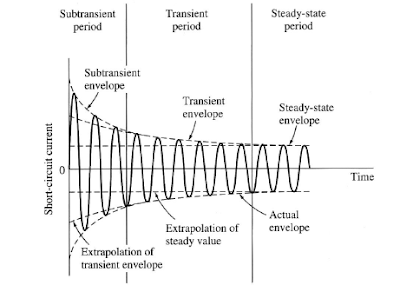What is the Making and Breaking Current of Circuit Breaker?
The circuit breaker is used for switching the circuit on and off and also for the isolation of the faulty section in case of a fault. The Making and Breaking Current of circuit breakers terms are very important. The making current of the circuit breaker is the maximum peak value of the current that the breaker can interrupt without any damage. The making and breaking current capacity parameter of the circuit breaker has prime importance when the circuit breaker opens at the time of fault and when the circuit breaker closes at fault.
The braking current capacity of the circuit breaker is the maximum fault current that can flow through the circuit breaker for a short period from the time of the short occurrence till the clearing of the fault without any permanent damage. The breaking current capacity or short circuit breaking current of the breaker is expressed in KA(RMS). The circuit breaker of 40 KA short circuit interrupting capacity can break the 40 KA current without getting damaged.
The making current of the circuit breaker is the maximum peak value of the current that the breaker can interrupt without any damage if the breaker is closed at fault.
The making current of the circuit breaker is always more than the breaking current. To understand why the making current capacity of the breaker should be more than its breaking current capacity, let’s discuss how the fault current behaves and what is the characteristics of the fault current.
When a fault occurs in the electrical network, the AC and DC current is present. The DC current magnitude is about 60 to 80 % of the AC current. The symmetrical AC components of the fault current are given below.

There are three periods of time after the occurrence of the fault.
Sub-transient period:
The AC current is very large but decays very fast. The DC current is about 60 to 80 % and gets decayed within 1 to 2 cycles.
Transient period:
The current falls at a slower rate.
Steady-state period:
In a steady-state period, the current reaches a steady value.
The magnitude of the current during the sub-transient period:
The magnitude of the current during the sub-transient period is maximum. If the circuit breaker is made on when the fault persists, it must be capable of interrupting the fault current without getting damaged.
Relationship between Making and Breaking Current:
Let the symmetrical breaking current be I Amperes( RMS)
The peak value of the symmetrical breaking current is
= √2 x I
=1.414 x I
During the sub-transient period, the DC current is also present for one to two cycles. The magnitude of the DC current is approximately equal to the peak value of the symmetrical breaking current.
The peak value of the current during the sub-transient period is
Making current = 1.414 x I x 1.8
= 2.55 x I
Making current = 2.55 x Symmetrical breaking current
If the symmetrical braking current capacity of the breaker is 40 KA(RMS), the making current of the breaker must be 2.55*40=102 KA(peak).
1.8 is multiplied because of doubling effect
the breaking current is expressed in kA (kilo amps), not KA (kelvin amps)